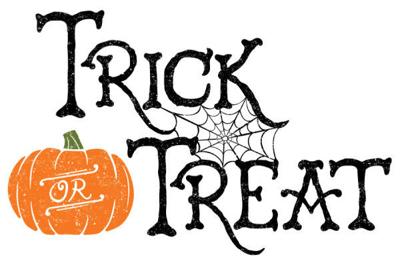After a hiatus in 2020 due to the COVID-19 pandemic, U.S. Census officials are predicting a boom year for Halloween celebrations in 2021.
WASHINGTON, D.C. – After a depressed holiday in 2020 due to the coronavirus pandemic, officials of the U.S. Census Bureau are expecting Trick or Treaters of all ages to do a brisk business this Halloween.
Data collected recently by census-takers revealed that many cities and counties banned Halloween celebrations – including Trick or Treating by youngsters – due to the pandemic in 2020. Despite a resurgence of COVID-19 infections among unvaccinated adults, most communities are not curtailing traditional holiday activities this October.
That means that an estimated 41 million American children ages 5 to 14 will likely be going door-to-door to collect candy on either Saturday or Sunday.
That number will rise to 73.1 million if the upper age limit is adjusted to 18, to account for teens who are more likely to celebrate by attending parties, dances or haunted houses across the country.
Recent polling also indicates that 56 percent of U.S. adults (about 144 million) plan to celebrate Halloween this year.
Despite the best efforts of local officials, state lawmakers and federal economic managers, the Census Bureau reports that the pandemic has taken a toll on the commercial infrastructure that support Halloween celebrations.
For example, prior to the pandemic in 2019, there were 1,342 U.S. establishments that primarily produced chocolate products from cocoa beans. Thanks to the economic impact of COVID-19, that number has now dropped to 270.
The number of U.S. confectionery and/or nut stores has also dropped slightly, from 3,430 in 2019 to 3,389 this year.
Census officials also report that only 843 costume rental outlets survived the pandemic, down from nearly 1,000 in 2019.
On the bright side, however, the number of U.S. households that are potential targets for Trick –or-Treaters has grown from 122.4 million in 2019 to 126.8 million today.
Another aspect of Halloween that was seemingly unaffected by the pandemic is the haunted house scene. The U.S. Chamber of Commerce estimates that more than 1,200 haunted houses are now operated during October and they have gradually become a $300 million industry.
The roots of present-day Halloween festivities date back 2,000 years to the Celtic autumn solstice observance called Samhain.
Although Halloween is now considered to be the second largest commercial holiday in the United States, the occasion is actually celebrated in one form or another in nearly 100 countries worldwide.
Census officials estimate that nearly 90 percent of all American households will participate in holiday activities, in the process spending about $7 billion annually.
Here in Logan, city officials are hoping that costumed youngsters and their parents will flock to the Downtown Logan Hocus Pocus Witches Dance and Halloween Festival on Saturday, Oct. 30.
That event on Center Street will feature a daytime treat walk for youngsters, a costume contest, live music, a pumpkin decorating contest, the city’s traditional Witches Dance and finally horror movie showings at the Utah Theatre.

